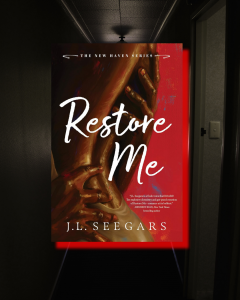From Page to Screen Week Two: STRATEGY
5 min read
Adapting a book into a visual format is an exciting yet challenging venture. Whether your story is best suited for a movie or a TV series, crafting a solid strategy is crucial to ensure its success. In Week Two of your adaptation journey, you’ll need to focus on three key areas: deciding on the format, setting clear goals, and considering the budget. This guide will walk you through these steps, helping you turn your beloved book into a visual masterpiece.
Deciding on the Format

Movie vs. TV Series: The Great Debate
The first step in your adaptation strategy is determining whether your story is better suited for a movie or a TV series. Each format has its unique advantages and considerations.
Movies:
- Concise Storytelling: Movies typically range from 90 to 180 minutes, which requires a more condensed and focused narrative. If your book has a clear, straightforward plot with a definitive beginning, middle, and end, a movie might be the perfect choice.
- High Production Value: Movies often have higher budgets, allowing for more impressive special effects, elaborate sets, and star-studded casts. If your story benefits from a cinematic experience, a movie can provide the necessary visual impact.
- One-Time Commitment: Viewers commit to a single sitting, making movies ideal for stories that pack a punch and leave a lasting impression.

TV Series:
- Expanded Narrative: TV series offer the luxury of time, allowing for more detailed character development, subplots, and world-building. If your book has multiple storylines or complex characters, a series might be the better fit.
- Episodic Engagement: The episodic nature of TV keeps audiences returning week after week, creating a loyal fan base. This format is ideal for stories with cliffhangers and ongoing suspense.
- Flexible Formats: TV series can range from limited series with a few episodes to multi-season epics, providing flexibility in how you unfold your narrative.
Evaluating Your Story

To decide on the best format for your adaptation, consider the following:
- Length and Complexity: How long is your book, and how intricate is the plot? A sprawling epic with numerous characters might thrive as a TV series, while a concise thriller might shine as a movie.
- Pacing and Structure: Does your story have natural breaks that lend themselves to episodic storytelling, or does it build towards a single, climactic conclusion?
- Audience Engagement: Think about how you want your audience to experience your story. Do you want them to binge-watch episodes or enjoy a single, immersive viewing?
Setting Goals
Defining Success
Once you’ve decided on the format, it’s time to set clear goals for your adaptation. Understanding what you hope to achieve will guide your decisions and keep you focused.
Consider Your Objectives:
- Platform Targeting: Are you aiming for streaming platforms like Netflix or Amazon Prime, traditional networks like HBO or NBC, or indie film festivals? Each has different audiences, requirements, and opportunities.
- Audience Reach: Who is your target audience? Are you looking to attract existing fans of your book, reach new viewers, or both?
- Critical Acclaim vs. Commercial Success: Are you seeking awards and critical recognition, or is your primary goal to achieve high viewership and financial returns?
Crafting Your Vision
Articulate a clear vision for your adaptation. This involves defining the tone, style, and unique selling points that will make your project stand out.
- Tone and Style: Is your story a dark, gritty drama, a lighthearted comedy, or a thrilling adventure? Establishing the tone will influence everything from casting to cinematography.
- Unique Selling Points: Identify what makes your story special. Is it the complex characters, the intricate plot twists, or the rich world-building? Highlight these elements in your adaptation strategy.
Budgeting
Research and Planning
Budgeting is a critical aspect of any adaptation project. A well-planned budget ensures that you can bring your vision to life without financial pitfalls.
Start with Research:
- Screenwriting Costs: Hiring a professional screenwriter can be a significant expense, but it’s crucial for translating your book into a compelling screenplay. Research the going rates for screenwriters with experience in your genre.
- Production Costs: This includes everything from casting and crew salaries to sets, locations, costumes, and special effects. Consider the scope of your project and gather estimates for each element.
- Marketing and Distribution: A successful adaptation doesn’t end with production. Plan for marketing campaigns, festival submissions, and distribution deals to ensure your project reaches its intended audience.
Building a Realistic Budget
Break down your budget into key categories and allocate funds based on your research. Here are some essential components to consider:
- Development:
- Screenwriting fees
- Script revisions and consultations
- Pre-Production:
- Casting
- Location scouting
- Set design and construction
- Production:
- Director and crew salaries
- Equipment rental
- Special effects and stunts
- Post-Production:
- Editing
- Sound design
- Visual effects
- Marketing and Distribution:
- Advertising campaigns
- Film festival submissions
- Distribution deals
Securing Funding
Once you have a budget in place, explore funding options. This could include:
- Studios and Production Companies: Pitch your project to studios or production companies that have the resources and expertise to bring it to life.
- Crowdfunding: Platforms like Kickstarter or Indiegogo can help you raise funds directly from your audience.
- Grants and Fellowships: Look for grants and fellowships offered by film organizations and cultural institutions.
- Investors: Private investors might be interested in backing your project in exchange for a share of the profits.
Putting It All Together
Adapting your book into a movie or TV series is a multifaceted process that requires careful planning and strategic decision-making. By focusing on the format, setting clear goals, and meticulously budgeting, you’ll be well on your way to creating a successful adaptation.
Practical Steps Forward
- Evaluate Your Story: Take a deep dive into your book and assess its length, complexity, and structure. Determine if a movie or TV series is the best format.
- Set Your Goals: Define what success looks like for your adaptation. Consider your target platform, audience reach, and whether you’re aiming for critical acclaim or commercial success.
- Research and Budget: Conduct thorough research on the costs associated with screenwriting, production, and marketing. Build a realistic budget and explore funding options.
Remember, every great adaptation starts with a clear plan and a passion for storytelling. With careful consideration and strategic planning, your book can transition from the page to the screen, captivating audiences and leaving a lasting impact. So, dive in, make those crucial decisions, and get ready to see your story come to life in a whole new way.








